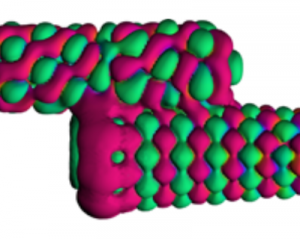Prentice et al., The ONETEP linear-scaling density functional theory program, J. Chem. Phys. 152, 174111 (2020)
Oliveira et al., The CECAM electronic structure library and the modular software development paradigm, J. Chem. Phys. 153, 024117 (2020)
In the summer of 2020 the Journal of Chemical Physics published a special issue on the topic of electronic structure software. This issue highlights the excellent ecosystem of electronic structure codes that are developed in the community and includes papers on some very well-established codes as well as more recent ones. It is these advances in electronic structure software, hand-in-hand with developments in computer architecture and compute capacity, that drive our progress towards a predictive, first-principles-based understanding of materials and molecular systems.
We have contributed to two papers in this special topic issue. The first paper is on the ONETEP software package, which is a linear-scaling density-functional theory code that is able to bring to bear the predictive power of first-principles simulations on systems that are typically well beyond the capabilities of conventional approaches, such as the plane-wave pseudopotential method. The second paper is about the CECAM Electronic Structure Library (ESL). The ESL was founded to catalyse a transition away from the traditional “monolithic” model of electronic structure software, towards a more modular structure that incorporates interoperable and reusable modules and libraries that are open-source and available to the general community. The aim is that this will lead to better optimisation, more agile code development, and lower barriers to entry for new developers. One of the other codes developed in our group, Wannier90, and the subject of an earlier research spotlight, is a paradigmatic example of the ESL philosophy. You can also read the special AIP Scilight on the ESL effort.
